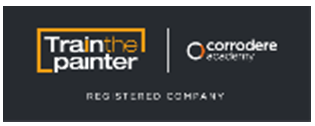Shot blasting is a process that is used in every industry that deals with metal – from automotive to aeronautical to, well, everything in between and beyond. Surprisingly, though, it’s something that not many of us understand or are too familiar with: let alone the various different types that fall under the ‘shot blasting’ category.
That’s why, here at Shirley Industrial Painters & Decorators Limited, we have put together a quick guide to the two main types of shot blasting in our latest blog post, which is informed by our 45 years of experience in the industry.
Wheel Blasting
Wheel blasting is the process of utilising the centripetal force of a turbine wheel – powered by an electric motor – in order to fire shots of abrasive at metals. This is designed to clean the material and remove any debris that has built up over time of use.
The process is airless – which will be more significant later – and simply relies upon the force of the motor spinning to propel the shots. These shots are usually steel shots, steel grit, or cut wire.
The pros of this process are that it is quick and efficient, and can therefore cover large surface areas in a short amount of time. Wheel blasting is also airless, which can save money on the larger projects because compressed air can be expensive.
On the contrary, wheel blasting does have its flaws. Most notably is that the choice of abrasive is limited, which can consequently cause damage to parts and surfaces that cannot withstand the pressure of the shots.
Air Blasting
Air blasting usually takes place in a blast room or blast cabinet and is the process of firing the chosen media at the chosen object pneumatically, with compressed air. Usually, the shots are directed using nozzles – which can be manually, electronically, or robotically controlled.
A further offshoot of air blasting is wet blasting, which follows the same principles but uses a media and water mix to clean the metal.
Unlike wheel blasting, air blasting can make the most of inexpensive blast media and even recycle these due to the process taking place in an enclosed environment. This makes air blasting – often – cheaper and always better for the environment.
The drawbacks of air blasting are that compressed air is expensive, which can sometimes offset the savings of recycling blast media and using cheaper shots altogether. The process of air blasting is also not as effective on large surface areas as wheel blasting with there also being less power behind the shots.
It Depends on the Project
These are just two of the types of shot blasting available to choose from, and they both present their respective benefits and drawbacks that make either one more suitable to different projects. In essence, the takeaway is that wheel blasting is for heavy-duty, large, industrial projects, whereas air blasting can be used in situations that are less extreme and on a smaller scale.
Shirley Industrial Painters & Decorators Limited
If you are interested in hearing more about the shot blasting services we provide at Shirley Industrial Painters & Decorators Limited, please feel free to reach out to us to enquire. You can call us on 03333 660 408 or fill out our simple contact form.














